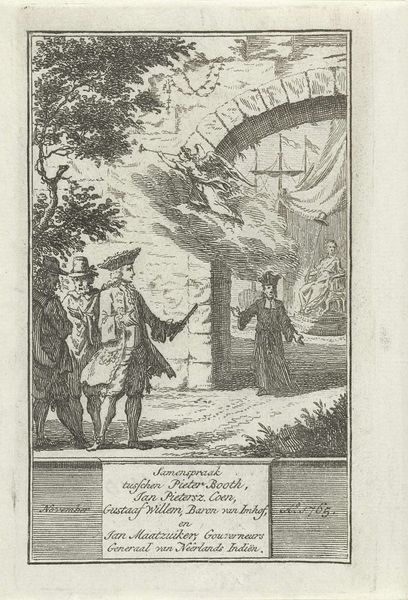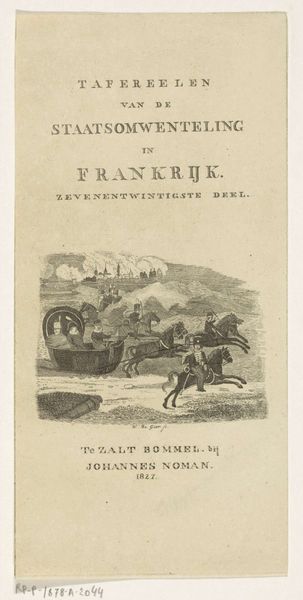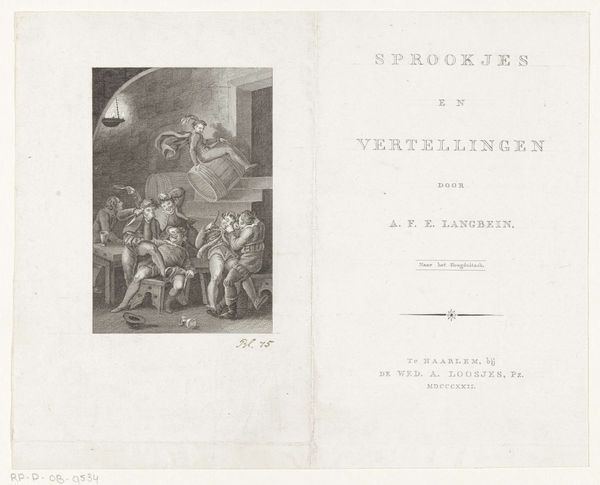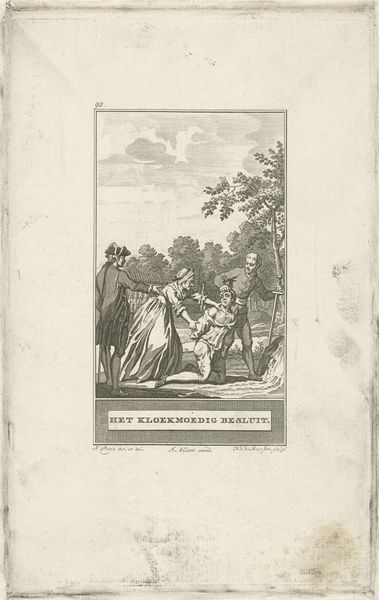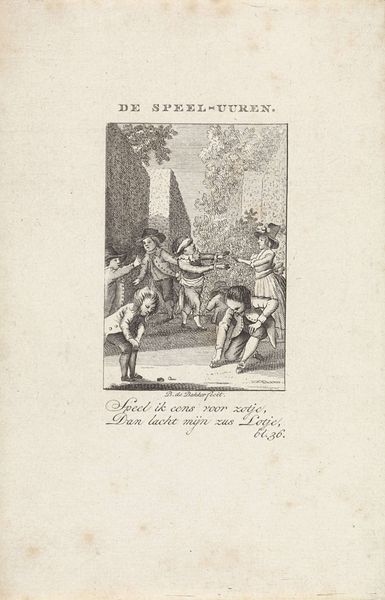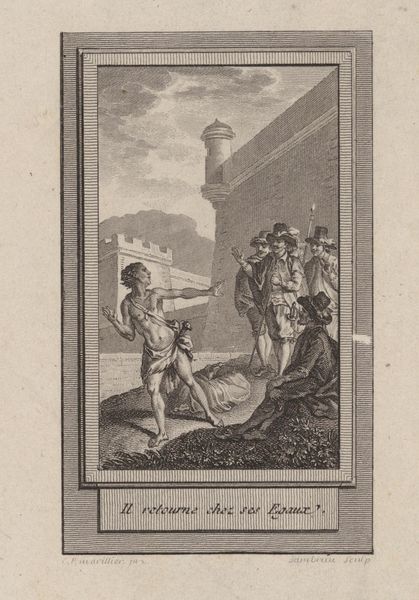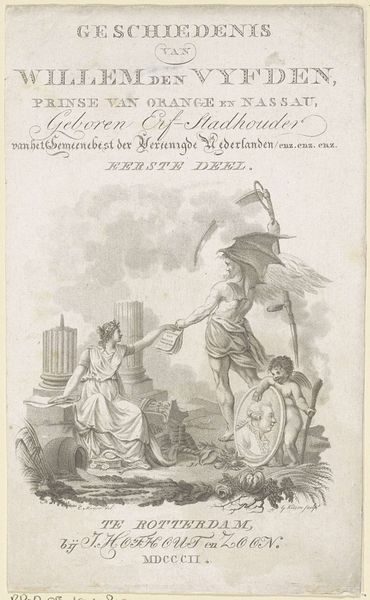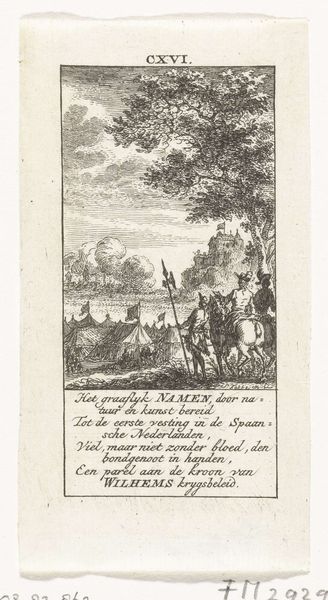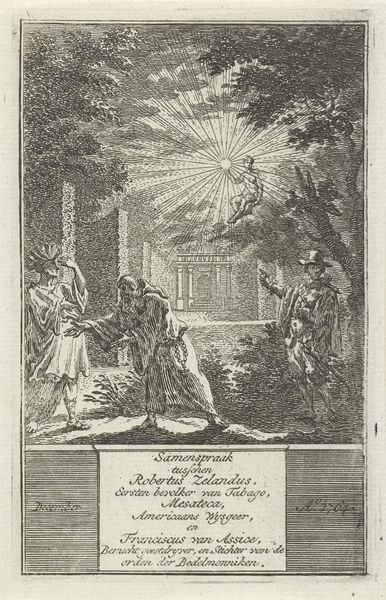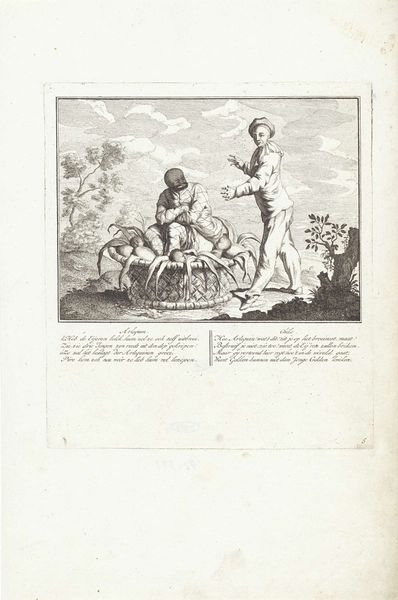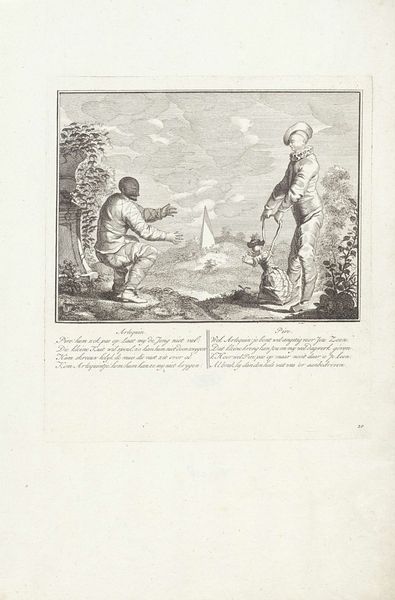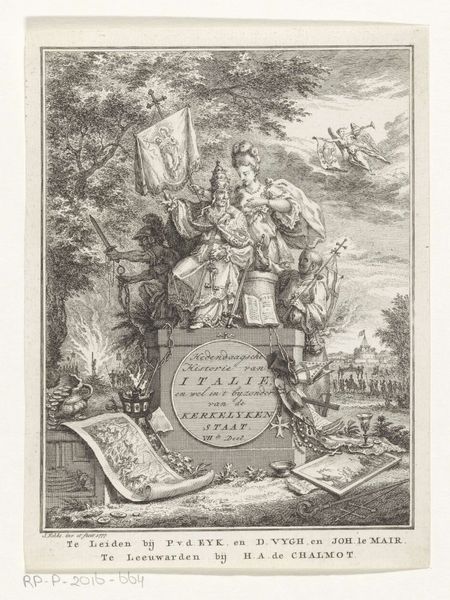
Titelpagina voor: Willem de Vyfde, of de Wraakgierige, treurspel, 1786 1786
0:00
0:00
Dimensions: height 225 mm, width 140 mm
Copyright: Rijks Museum: Open Domain
Editor: Here we have an engraving from 1786, the title page for "Willem de Vyfde, of de Wraakgierige, treurspel" or "William the Fifth, or the Vengeful Tragedy." I’m immediately drawn to the contrast between the strong diagonals of the spears and flags on the right and the more chaotic figures to the left. What compositional elements stand out to you? Curator: Note the receding linear perspective. The vanishing point directs the eye towards a distant vista, setting up a powerful juxtaposition between depth and the foreground figures. It is less the figures themselves but the shapes created through their juxtaposition which lend power to the narrative. Editor: So you’re saying that how they relate spatially matters more than the narrative they portray? Curator: Precisely. Consider the lines created between the central figure stepping onto the dais, the barrel shape near him, and the staff in the hand of the seated figure. This configuration echoes and reinforces the theme. How would you describe the artist’s use of line here? Editor: The line work is quite detailed, especially in the drapery. It almost seems at odds with the more rigid geometric structure of the image. Is that contrast deliberate? Curator: Observe how the hatching creates tonal variation and defines form. It gives an otherwise simple scene much needed complexity. Note, as well, the implied textures - rough, smooth, polished - created through these techniques. Are you sensing any dynamism created by these variations? Editor: I am now! Focusing on the visual language and structure like that helps to elevate the artwork beyond just a historical image. I see it with new eyes! Curator: Yes, considering how all these forms converge and diverge enables us to unlock what lies beyond mere representation.
Comments
No comments
Be the first to comment and join the conversation on the ultimate creative platform.
